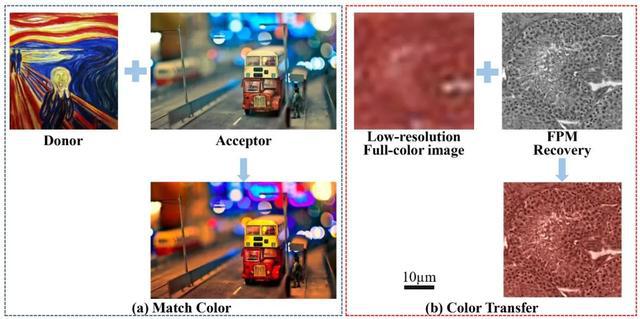2021-08-25
Since biological cells are usually colorless and transparent, they do not absorb much light, resulting in very low contrast under traditional optical microscopes, but due to differences in their internal structure, their refractive index distribution is uneven, thus When light passes through different positions of the cell, there is a difference in optical path length, and this part of information is called phase information.
Since current traditional cameras can only record intensity information, phase information is inevitably lost. Conversely, thanks to the lack of phase (depth) information, we can also use this property to achieve effects such as holding the sun in a macroscopic view. The term is called "perspective photography".
For colorless and transparent biological cells, it is conceivable that the most direct observation method is to dye the sample to form a sufficiently large contrast or generate a different spectrum to achieve the purpose of imaging, including the use of chemical dyes or fluorescent labels. For example, in middle school, we all observed onion epidermal cells under a microscope, which is the magenta dye used.
What to use LED lighting, everyone knows that LED is more energy-saving. But in fact, LED has a very good effect. It can mix colors more richly through a few simple base colors, creating a colorful world.
Recently, the team of researcher Ma Caiwen, researcher Yao Baoli, and associate researcher Pan An of the Xi’an Institute of Optics and Fine Mechanics, Chinese Academy of Sciences proposed a fast full-color microscopic imaging method based on color transfer using LED lighting, referred to as CFPM, which makes the coloring efficiency comparable. Achieve a leap compared to traditional methods. On July 27, the results were published online as a cover article in the 11th issue of SCIENCE CHINA Physis, Mechanics & Astronomy, 2021.
We all know that there are many classic old photos that are limited by past technology and can only be handed down in black and white. Although black and white photos have a special flavor, color photos can sometimes give people a stronger sense of substitution. This method of adding different filters to a photo is called color matching. The so-called color matching is to transfer the tone information of the donor image to the recipient image, so that the recipient image has the same "color style" as the donor image, and can also enable ordinary people to "paint" the Van Gogh style painting.
Inspired by this idea, the uniqueness of the color transmission idea is to change the original R/G/B three-channel into a two-channel mode-black and white brightness image and color texture information, which replaces the brightness (grayscale) information in the original three channels Separated from the color texture information, low-resolution color images are obtained by using LED lighting, and the color information is transferred to the high-resolution black and white (grayscale) acceptor image, so that the acceptor image has both high resolution and color Texture.
 Convey
thoughts in color. (a) Color matching: transfer color information; (b)
color transfer: transfer color texture information.
Convey
thoughts in color. (a) Color matching: transfer color information; (b)
color transfer: transfer color texture information.
Talking about future applications, the author of the paper said: "By transmitting the low-resolution true color texture information of the optical microscope to the electron microscope, this method also enlightens us that we can dye the black and white images of the electron microscope with true colors."

Source: Xi'an Institute of Optics and Fine Mechanics, Chinese Academy of Sciences